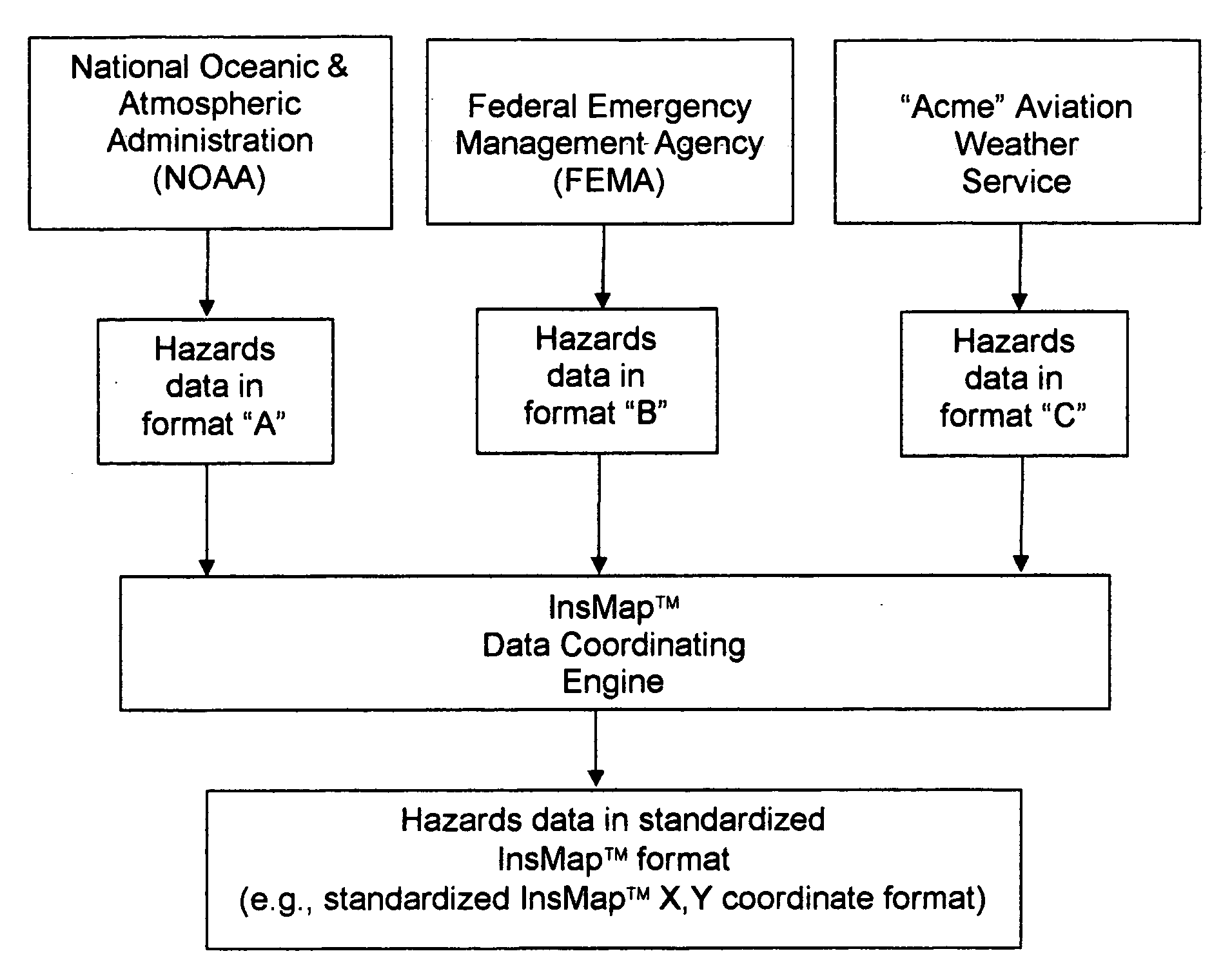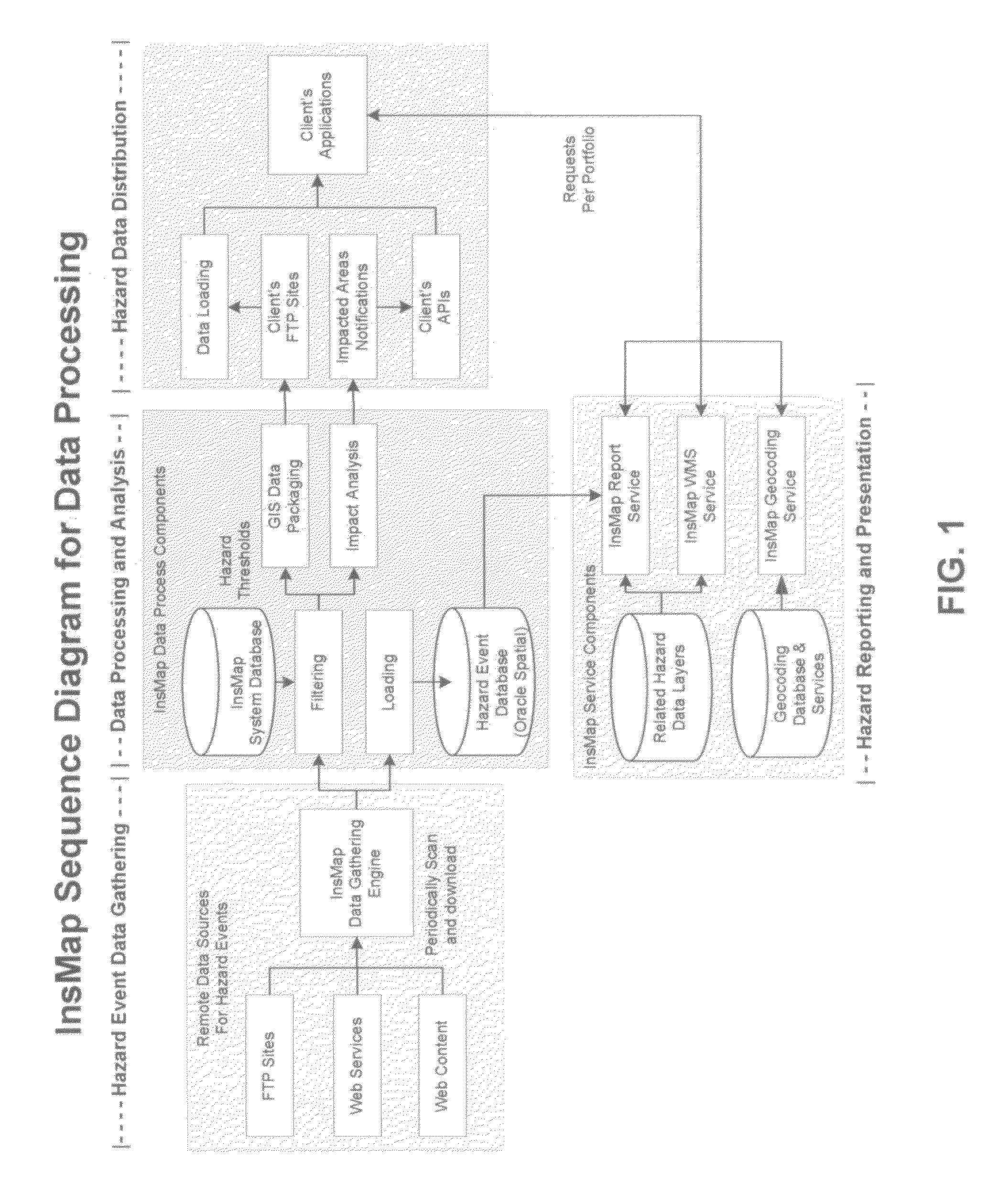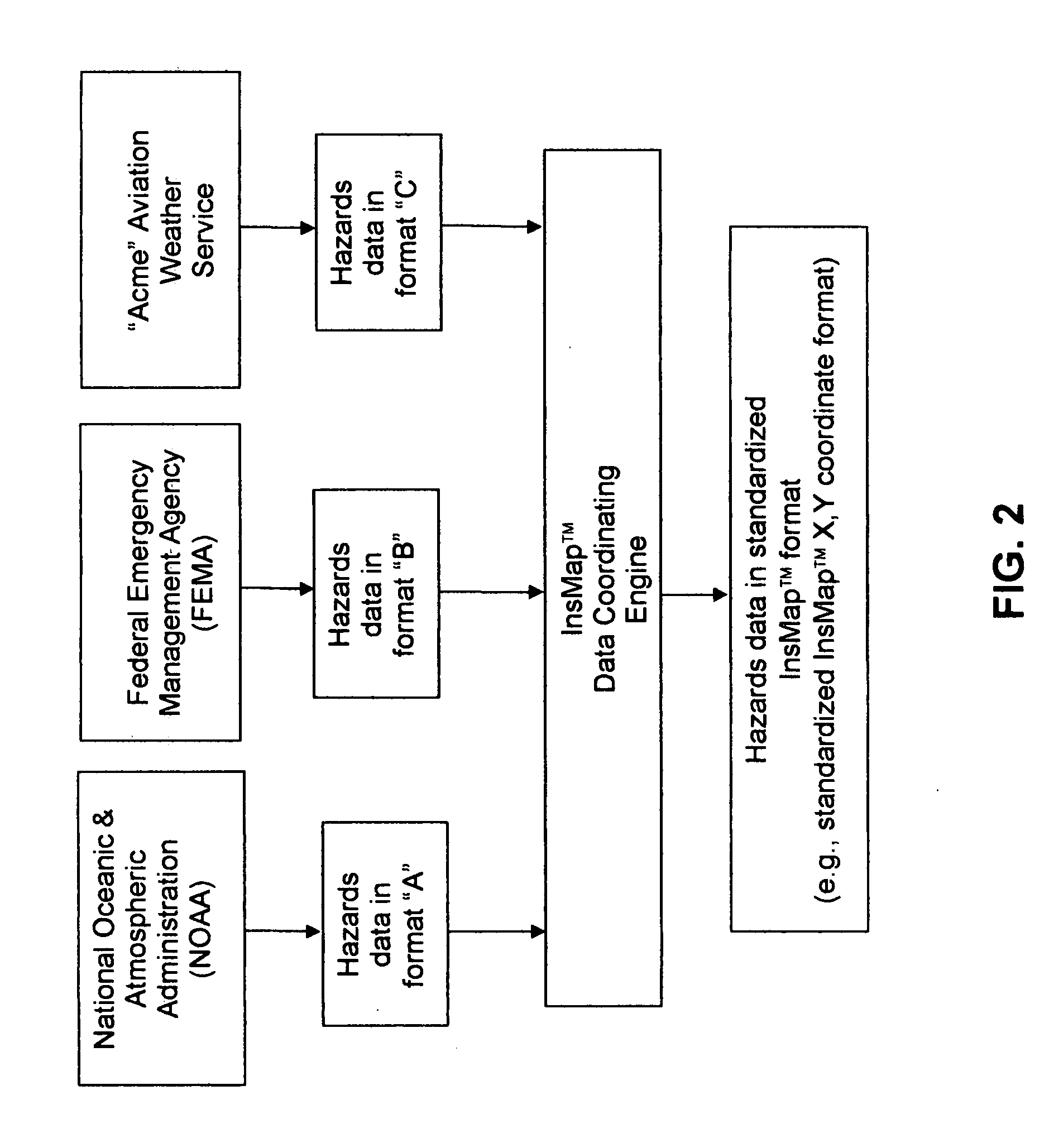Real-time modeling analysis of hazards data with large numbers of locations and with customized reporting and web-based delivery
a real-time modeling and analysis technology, applied in the field of data collection, analysis and reporting, can solve the problems of large quantity of hazards data available, inability to aggregate hazards data and mine, and affect human life and property, and achieve the effect of quick and easy harvesting
- Summary
- Abstract
- Description
- Claims
- Application Information
AI Technical Summary
Benefits of technology
Problems solved by technology
Method used
Image
Examples
Embodiment Construction
In General
[0027]The present invention provides a real-time monitoring system for determining potential loss exposure to hazards. More particularly, this system can be used to monitor virtually any location (or any number of locations) for any hazard (or any group of hazards) for which hazards data are available. Furthermore, this system can be used to predict, by location (e.g., by address, by targeted geographic region, by latitude / longitude, by specific X,Y coordinates, by census blocks, by geographic boundary lines, etc.), the potential loss exposure from specific hazard events such as floods, hurricanes, tornadoes, etc. In addition, this new system can be integrated with existing database, analysis and / or visual display systems so as to provide users with dramatically-enhanced levels of information.
[0028]For the purposes of the present application, the real-time system for monitoring hazards and determining potential loss exposure from those hazards will sometimes hereinafter be...
PUM
 Login to View More
Login to View More Abstract
Description
Claims
Application Information
 Login to View More
Login to View More - R&D
- Intellectual Property
- Life Sciences
- Materials
- Tech Scout
- Unparalleled Data Quality
- Higher Quality Content
- 60% Fewer Hallucinations
Browse by: Latest US Patents, China's latest patents, Technical Efficacy Thesaurus, Application Domain, Technology Topic, Popular Technical Reports.
© 2025 PatSnap. All rights reserved.Legal|Privacy policy|Modern Slavery Act Transparency Statement|Sitemap|About US| Contact US: help@patsnap.com



